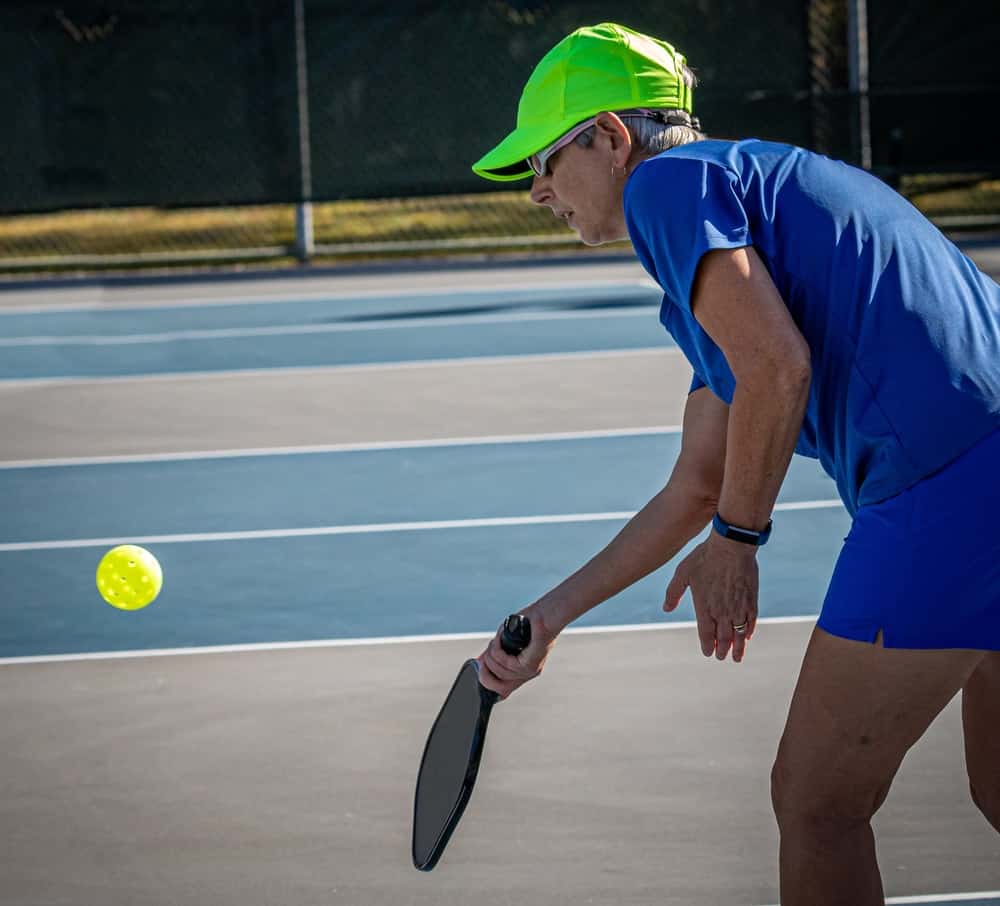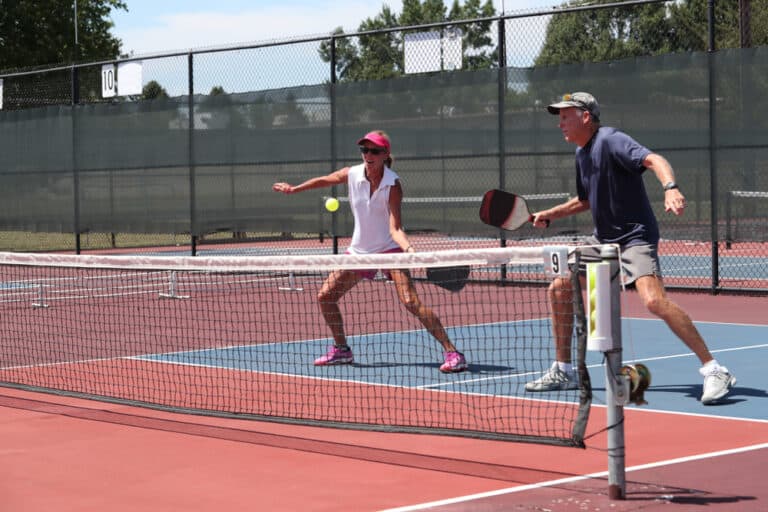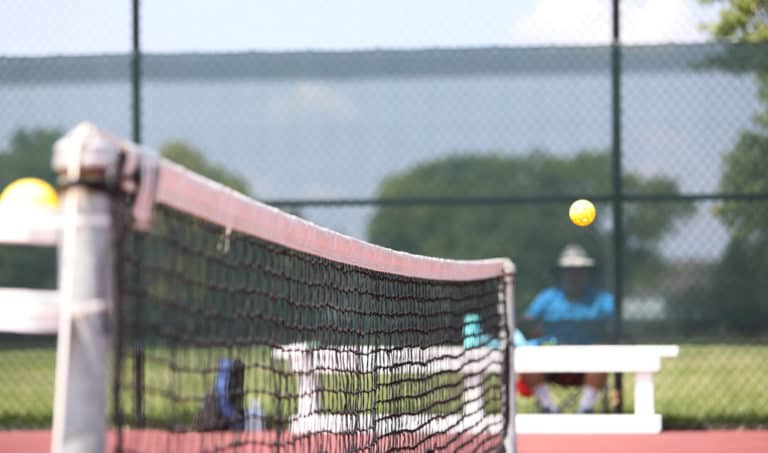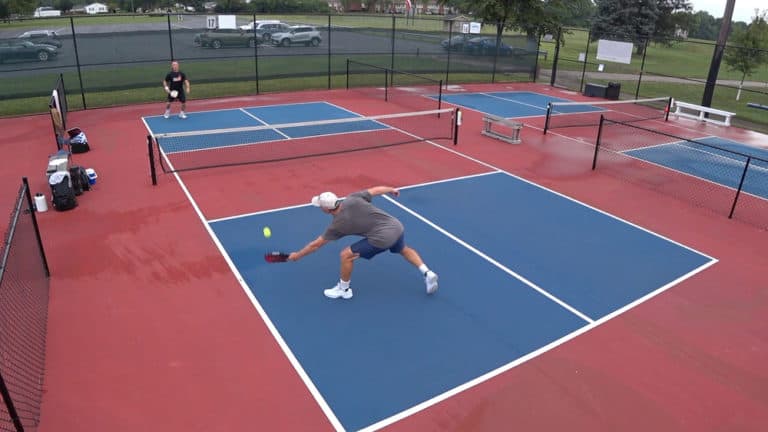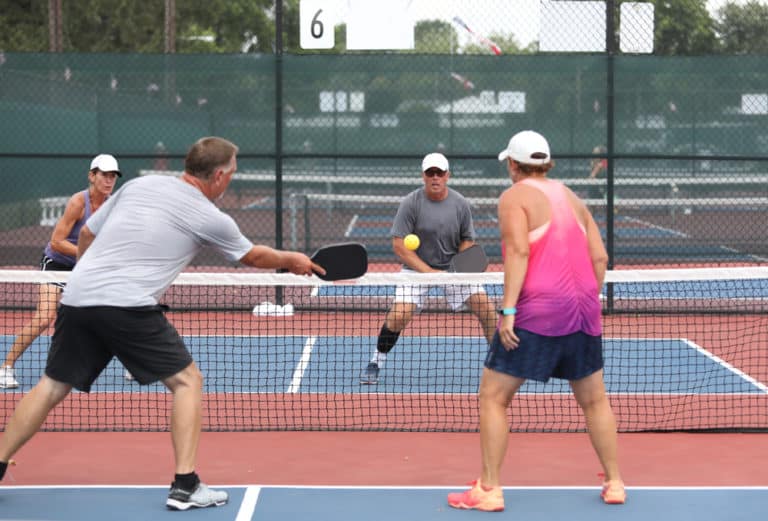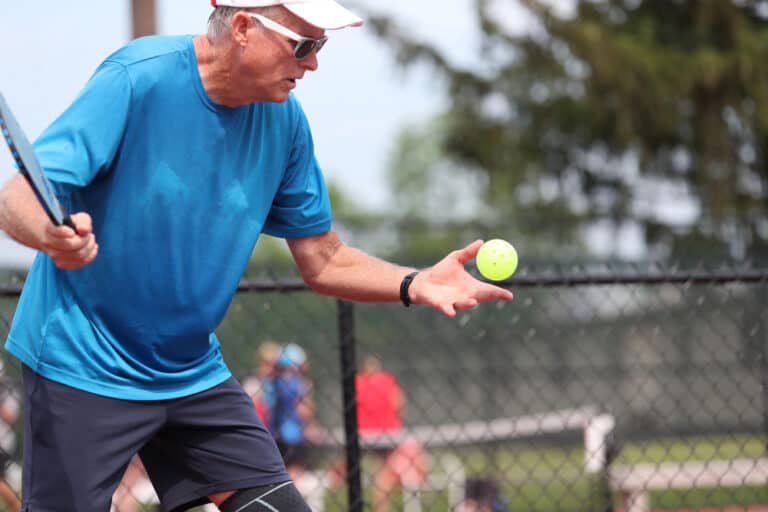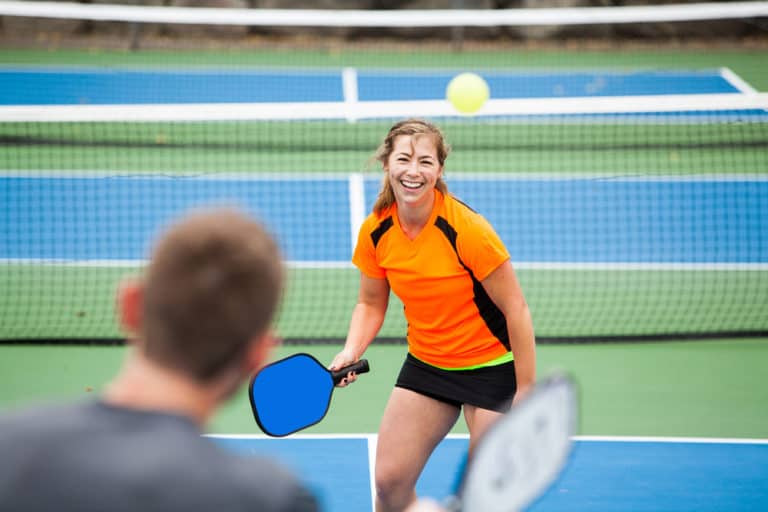How High Should A Pickleball Bounce?
Pickleballs must pass a bounce test to establish if it complies with the game’s rules. So how high should a pickleball ball bounce according to the rules? If you love pickleball and want to enjoy the game, you should play with a pickleball that is correct according to the regulations. Let us look at a pickleball’s specifications and the correct bounce height.
All pickleballs must pass standardized tests, and the acceptable bounce height is between 30 and 34 inches. Tests by the USAPA approve every aspect of pickleballs to support the integrity of the game and enhance the development and skill of all players.
All pickleballs might look the same, but the fact is that there is more to a pickleball than meets the eye. Much planning has gone into the design surrounding a pickleball’s circumference, weight, and hole size. Let us delve into all the details about how high a pickleball should bounce.
How High Should A New Pickleball Bounce?
According to the USAPA official rule book, Pickleballs are required to be bounce tested and, when dropped from 78 inches, should bounce between 30 and 34 inches. Also, just any bounce test is not enough. A precise surface, like granite, is used to test consistent bounce. Bounce testing Pickleballs requires the correct temperature of 75° to 80° F during all tests because that also makes a difference.
With so many racket-ball games, it is no surprise that many athletes have turned their attention to the ball to get an advantage. Pickleball has a ball design that puts all players on equal footing, leaving only room for skill. But why is a pickleball required to bounce at a certain height?
The two main variants of pickleball, indoor and outdoor, have slight differences. Pickleballs played outdoors are heavier and bounce higher than those used indoors. Weight is added to outdoor pickleballs to compensate for the wind. Some players play with indoor balls outside because they are more forgiving and may create longer rallies.
Pickleball is a fun and exciting game, and all pickleballs have to comply with the rules and bounce between 30 and 34 inches to advance skill and give players an equal chance.
When Do Pickleballs Need To Be Replaced?
Figuring out the average lifespan of a pickleball is no easy task. Although a pickleball is durable and still looks good, it could need replacement. These balls are expertly made, but during their use, they are exposed to a wide range of factors and will, at some point, need replacement.
Many factors influence a pickle ball’s lifespan, but in general, it functions at its peak for three to five games before it is recommended to be replaced. If you notice that your pickleball has slowed down considerably, is cracked, dented, or no longer has the same bounce, replacing it is a good idea.
A simple test can help you establish if your pickleball needs replacing. Gently spin your pickleball into the air; this will help determine if it is no longer round and has lost its shape. If it is deformed or has a small dent in it, you should be able to see it. If your pickleball shows any sign of change in its shape, you should replace it because it will affect your game.
Because a pickleball needs to bounce between 30 and 34 inches, the bounce test will quickly show if your ball needs replacing. There is no perfect way to conclude if a pickleball has run its course, and if you are playing a casual game, it should not matter too much unless it is cracked or dented. If you are a professional player replacing it every three to five games is the best way to go.
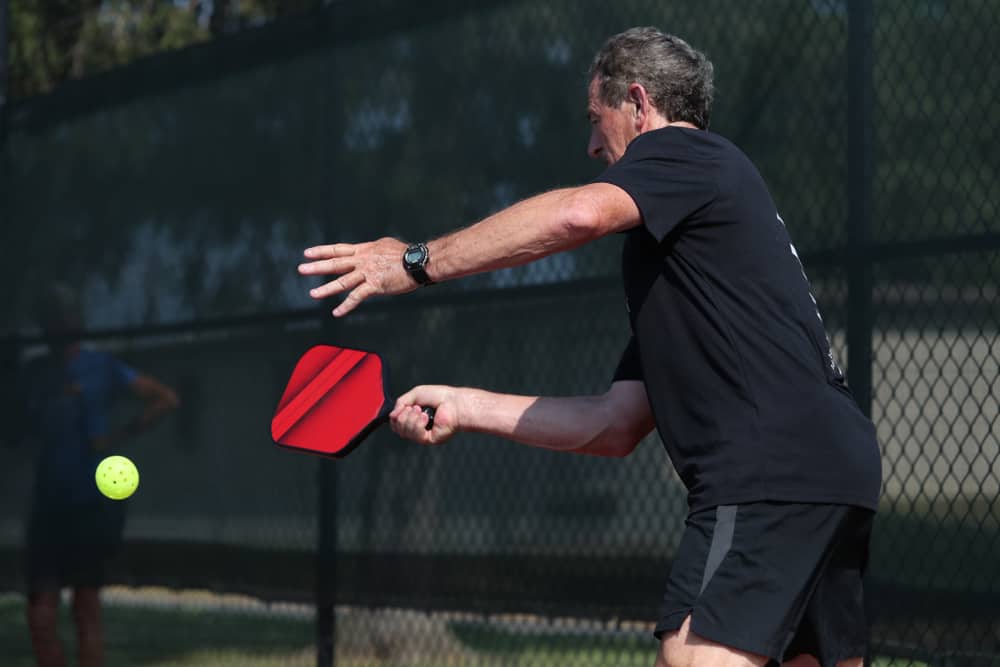
What Differences Are There Between Pickleballs?
Pickleball is played indoors and outdoors, and minor differences in the ball help get the same experience on both indoor and outdoor pickleball courts. But why are there differences in the ball for the same game?
Pickleball played outside is subject to wind, changing the ball’s flight path. The issue with wind resistance is resolved by using a different ball design with 40 holes as opposed to an indoor ball with 26 holes. These minor modifications to the ball make for better aerodynamics and make playing pickleball outside just as enjoyable.
Outdoor pickleballs weigh 0.9 ounces and are heavier than indoor pickleballs, which weigh 0.8 ounces to make them easier to carry into the wind. A smooth surface makes it less likely to wear since outdoor courts are not as smooth as indoor courts. The outside elements affect a pickleball, and replacing it after ten matches is a good idea.
Pickleballs designed to be played outside are heavier and more difficult to control in a game than indoor pickleballs, but it has more bounce. Even though there are differences between indoor and outdoor pickleballs, manufacturers of pickleballs adhere to the regulations to ensure that the ball does not bounce less than 30 inches or more than 34 inches.
What To Look For When Buying A Pickleball
Not every pickleball player wants to be a pro, and when you want to buy a pickleball, you have many options. If you are a professional, your choices are limited to balls approved by USAPA. Here are some tips to help you choose the right pickleball.
You first need to consider whether you will play indoor or outdoor pickleball. Indoor pickleballs are often used outside, which makes it easy, but outdoor pickleballs do not seem to work as well indoors.
When choosing a pickleball, consider the material for durability. Branded pickleballs, especially if approved by USAPA, are a good indicator of their quality. More rigid balls like outdoor pickleballs do not necessarily last longer; the softer indoor pickleball has shown to outlast its outdoor counterpart. Indoor pickleballs last longer and are more lenient than outdoor pickleballs, especially for casual players.
And last but not least, you need to get the diameter of your pickleball right. You can expect better performance and control from the right-sized pickleball. Indoor pickleball’s diameter should be 2.87 inches, and outdoor pickleballs 2.97 inches.
Conclusion
According to pickleball rules, getting a pickleball that bounces between 30 and 34 inches is correct and will make the game more enjoyable. The correct bounce helps improve your skills and is a good indicator of whether your pickleball needs replacing.
Indoor and outdoor pickleballs are slightly different and perform differently, but indoor pickleballs can also be used to play outdoor pickleball. Choose the ball best suited to your game if you love the sport. You can feel secure about your choice of pickleball if it is branded and USAPA-approved.

